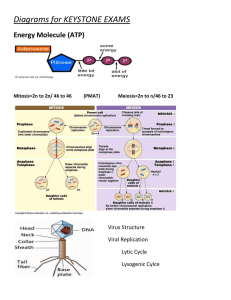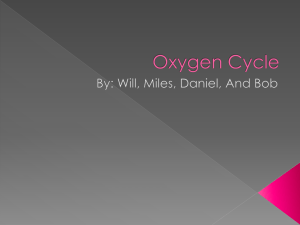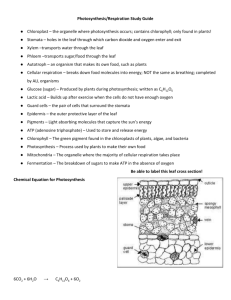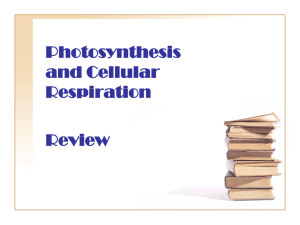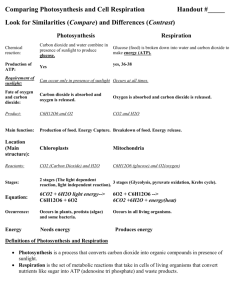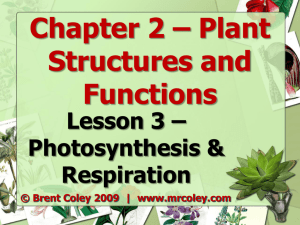photosynthesis and respiration are opposites!
advertisement
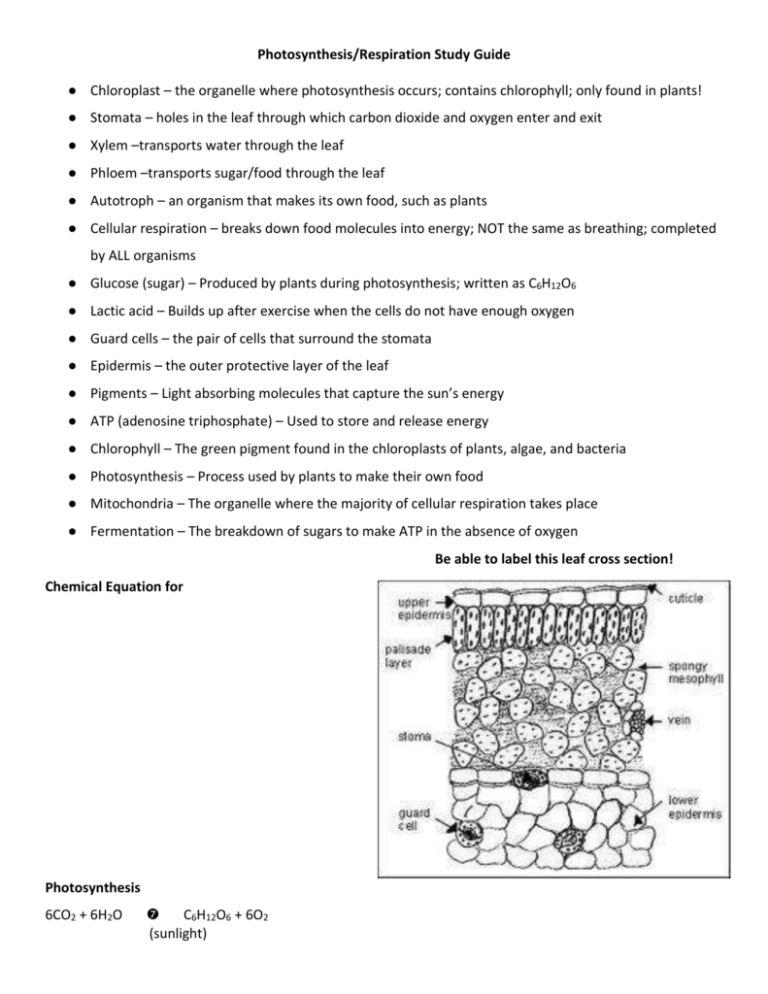
Photosynthesis/Respiration Study Guide ● Chloroplast – the organelle where photosynthesis occurs; contains chlorophyll; only found in plants! ● Stomata – holes in the leaf through which carbon dioxide and oxygen enter and exit ● Xylem –transports water through the leaf ● Phloem –transports sugar/food through the leaf ● Autotroph – an organism that makes its own food, such as plants ● Cellular respiration – breaks down food molecules into energy; NOT the same as breathing; completed by ALL organisms ● Glucose (sugar) – Produced by plants during photosynthesis; written as C6H12O6 ● Lactic acid – Builds up after exercise when the cells do not have enough oxygen ● Guard cells – the pair of cells that surround the stomata ● Epidermis – the outer protective layer of the leaf ● Pigments – Light absorbing molecules that capture the sun’s energy ● ATP (adenosine triphosphate) – Used to store and release energy ● Chlorophyll – The green pigment found in the chloroplasts of plants, algae, and bacteria ● Photosynthesis – Process used by plants to make their own food ● Mitochondria – The organelle where the majority of cellular respiration takes place ● Fermentation – The breakdown of sugars to make ATP in the absence of oxygen Be able to label this leaf cross section! Chemical Equation for Photosynthesis 6CO2 + 6H2O C6H12O6 + 6O2 (sunlight) Raw materials – Carbon dioxide, water Catalyst – Sunlight Products – Glucose (sugar), oxygen ***Takes place in the chloroplasts Chemical Equation for Respiration C6H12O6 + 6O2 6CO2 + 6H2O + ATP (energy) Raw materials - Glucose (sugar), oxygen Products – Carbon dioxide, water, ATP (energy) ***Takes place in the mitochondria PHOTOSYNTHESIS AND RESPIRATION ARE OPPOSITES!

